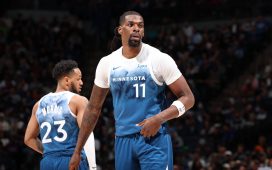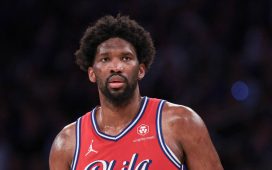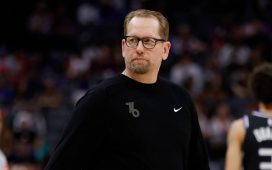While some high-profile players and team owners have griped about the NBA’s newly introduced play-in tournament, the format is working “spectacularly well” and has virtually no downside, contends John Hollinger of The Athletic.
As Hollinger writes, the new wrinkle has generated excitement at more levels of the standings, with teams in the 4-6 range fighting to hold their positions and clubs in the 9-12 range trying to win games rather than pivoting to tanking. As a result, we’re getting more interesting late-season matchups, with fewer teams coasting into the postseason.
“I think it’s great,” one assistant coach told Paolo Uggetti of The Ringer. “It gives lesser and younger teams something to play for toward the end of the season. It makes teams not tank and helps younger teams grow and develop.”
The play-in tournament will see the No. 7 team host the No. 8 team, with the winner claiming the seventh seed in the conference. To determine the eighth seed, the loser of that game would play the winner of a game between the Nos. 9 and 10 teams.
As Uggetti points out, one counter-argument against the play-in format being implemented in 2020-21 specifically is that COVID-19 has wreaked havoc on some teams’ seasons, affecting player availability and impacting players’ performances even after they return. A franchise hit hard during the season by COVID-19 may end up in the play-in tournament when it should have been a top-six seed. Additionally, a club affected by the virus during the next week or two could be missing key players as it tries to win a play-in game.
“The apocalypse option is what if a No. 6 seed or No. 7 seed gets hit with COVID?” a Western Conference general manager said to Uggetti. “And they have to play in the play-in, lose and then they don’t make the playoffs?”
That would certainly be a worst-case scenario for the league, but it’s more of an argument against holding a season during a pandemic at all than an argument against the play-in tournament. A player who contracts the virus typically misses at least two or three weeks, so an entire playoff round could conceivably be affected by bad COVID-19 luck — not just one or two play-in games.
Other people around the league who are lukewarm on the play-in concept have suggested that the format devalues the regular-season results and that play-in games should be conditional based on the standings. For instance, if the No. 8 seed has a substantial cushion on the No. 9 team, then perhaps a play-in shouldn’t be necessary.
“What if the No. 7 seed has a four-game lead on No. 8? And now it’s gonna almost be like Game 7 of the Finals, win or go home? It’s not really fair,” one Eastern Conference executive said to Jake Fischer of Bleacher Report. “Anything can happen. And someone can get hurt.”
There’s some validity to that complaint, but the NBA has long allowed more than half of its 30 teams to automatically qualify for the postseason, which is something of a devaluation of the regular season in its own right. A reward shouldn’t necessarily be a given for a club that finishes seventh in a conference of 15 teams in the regular season.
Concerns about subjecting strong No. 7 seeds to a play-in game may also overstate the potential volatility of the tournament. If a seventh-seeded team finished the regular season with a significantly better record than the other three clubs in the play-in tournament, there’s no reason that team shouldn’t be able to win at least one of two potential home games against those lesser opponents.
Hollinger touches on this point in his column, responding to critics who say the NBA would be shooting itself in the foot if a possible contender like the Lakers or Celtics has to participate in the play-in tournament and is eliminated before the playoffs even begin.
As Hollinger observes, if those teams can’t win one of two play-in games to clinch a playoff spot, it’s probably safe to assume they weren’t going to be legitimate contenders anyway. If the Lakers finish seventh, the likeliest outcome is that the NBA would get great TV ratings for the play-in tournament and L.A. would ultimately earn a playoff spot anyway, Hollinger adds.
Evan Wasch, who is the NBA’s executive vice president of basketball strategy and analytics and has become the spokesperson for issues relating to the play-in tournament, tells Uggetti that he values positive or negative feedback from teams and will take it into account as the league considers possible tweaks going forward. But by the sounds of it, the play-in format is probably here to stay.
“I’ve talked to the league at length about this, and it’s not going anywhere,” the aforementioned Western GM said to Uggetti. “They studied the European (soccer) models and they want to expand winning as much as they can to other markets and teams. There’s only one NBA champion, and this is a way for more teams to make it to the playoffs and for them to have the broader market appeal of winning something.”







